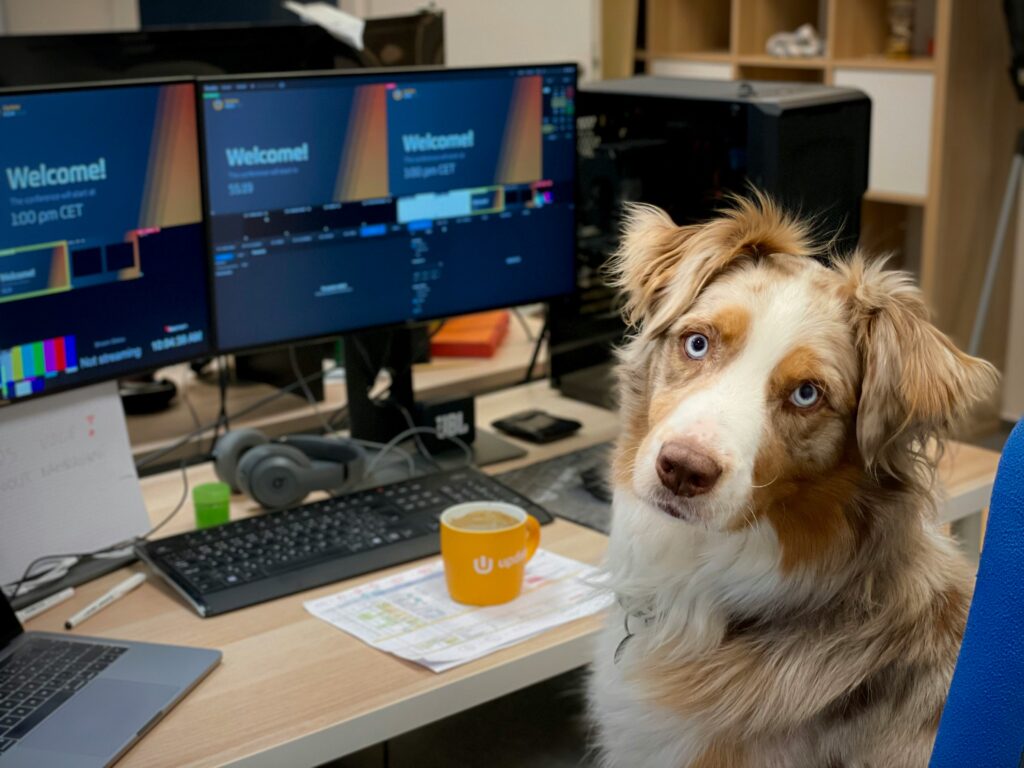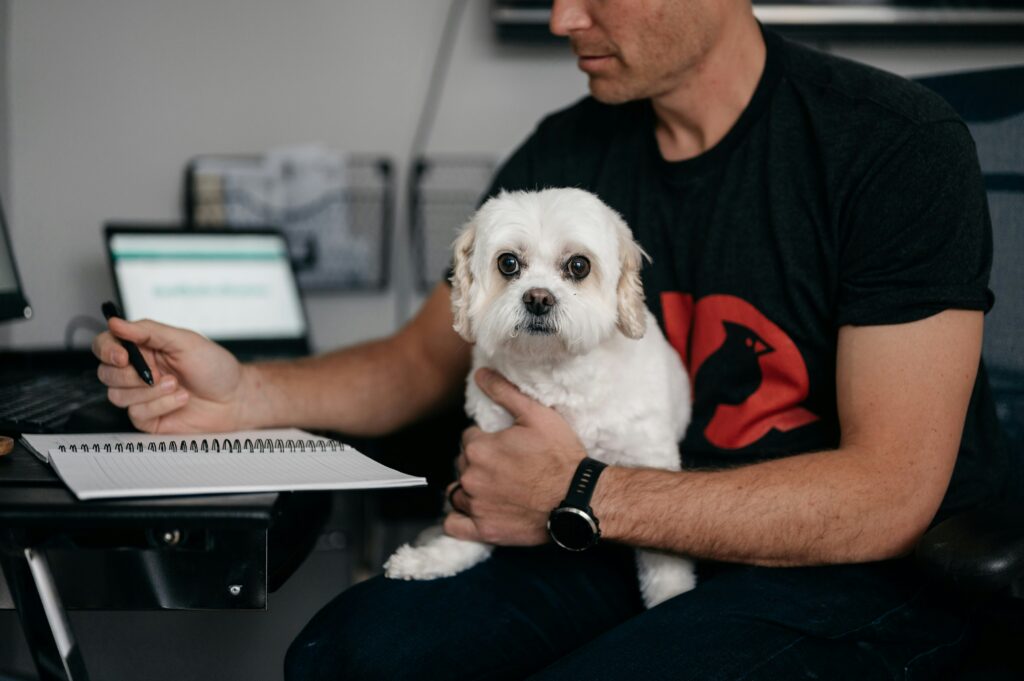Dogs Improve Teamwork and Communication
Successful businesses rely on more than just talent and productivity—they thrive on collaboration, communication, and a strong sense of team. While many companies turn to workshops and retreats to build this kind of camaraderie, one simple and surprisingly effective tool is often overlooked: dogs in the workplace.
Having dogs around doesn’t just reduce stress or boost morale; it also helps build stronger teams. From creating organic opportunities for interaction to encouraging shared responsibility, dogs can transform workplace dynamics in remarkable ways.
Natural Icebreakers for New Relationships
Starting a conversation at work isn’t always easy, especially in larger companies or remote-friendly environments. Dogs make it easier. Whether it’s someone asking, “What’s your dog’s name?” or laughing at a puppy’s silly antics, dogs act as natural social lubricants.
These spontaneous interactions help break the ice between coworkers who might not otherwise connect. Over time, this leads to more cross-department collaboration and a friendlier, more open work culture.
Fostering Informal Conversations
While formal meetings are necessary, it’s often the informal, hallway chats that spark innovative ideas or solve stubborn problems. Dogs provide opportunities for these casual conversations to happen more frequently.
A quick chat while letting your dog outside or meeting someone in the break room as your dogs play can foster connections that build trust and open the door to collaboration. These moments strengthen relationships that benefit work-related projects down the line.
Shared Responsibility Builds Trust
When multiple team members help care for a dog—walking it, refilling its water, or playing with it during breaks—they build a subtle sense of shared purpose. These small acts of cooperation reinforce team spirit and promote the idea that everyone contributes to the workplace experience.
This spirit can spill over into project work, where mutual support and a willingness to pitch in become part of the team culture.
Strengthening Remote and Hybrid Teams
Even for remote or hybrid offices, having dogs involved in workplace culture can support connection. Pet-friendly video meetings, dedicated Slack channels for sharing dog photos, or in-office dog days where hybrid teams gather can build camaraderie beyond daily tasks.
Dogs give employees something light-hearted and personal to bond over, which helps humanize interactions and strengthen remote relationships.
Reducing Social Tension
In high-pressure work environments, miscommunication or interpersonal conflict can sometimes arise. The presence of dogs can help de-escalate tension. Their calming influence softens the tone of conversations, provides emotional relief, and helps reset the room.
Simply having a dog around can make people more approachable and receptive to feedback—important factors for open and productive communication.
Creating a Collaborative Culture
A pet-friendly policy signals that a company values openness, flexibility, and employee happiness—all characteristics that support collaboration. When leadership creates an environment where dogs are welcome, it sets a tone of inclusivity and care.
Employees in such cultures often feel more empowered to share ideas, take initiative, and engage more deeply with team members. Dogs, while not the sole factor, help reinforce the kind of atmosphere where collaboration can flourish.
Encouraging Empathy and Understanding
Dogs can also help teach valuable soft skills. Pet owners often develop greater empathy, patience, and communication skills through caring for their animals. These qualities transfer into the workplace, helping team members better relate to each other.
When coworkers regularly interact around their pets, they also learn more about each other’s personalities and lives outside of work. This deeper understanding improves group dynamics and fosters mutual respect.
Establishing Rituals That Strengthen Bonds
Whether it’s a daily dog walk break, a team outing to a dog-friendly café, or celebrating a pup’s birthday with office treats, dogs create fun rituals that strengthen social bonds.
These shared traditions give coworkers something to look forward to and talk about beyond project updates and deadlines. They help maintain morale and deepen personal connections that carry over into team collaboration.
Tips for Maximizing the Team Benefits of Dogs
To ensure dogs contribute positively to teamwork and not distraction, here are a few simple guidelines:
-
Encourage shared dog time: Let team members take turns walking or playing with the office dog.
-
Create social spaces: Designate a dog-friendly common area where employees can gather informally.
-
Respect boundaries: Not everyone loves dogs, so offer dog-free zones and always ask before introducing pets.
-
Use pets in team building: Plan events like “bring your dog to work” days or pet-themed team activities.
Final Thoughts
When it comes to building better teams, we often look to workshops, coaching, and strategy sessions—but sometimes, a furry friend with a wagging tail is the best team builder of all.
Dogs help people connect more easily, communicate more openly, and support one another more willingly. In doing so, they help create workplaces that are not only more productive but also more human.
If your team could use a boost in connection and collaboration, consider letting dogs lead the way.



